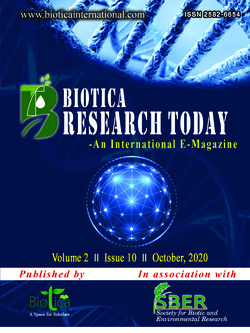
Contribution of Indian Cow in Rural Economy
Geeta Mohan*
Dept. of Agriculture, Jagannath University, Jaipur, Rajasthan (303 901), India
O. P. Sharma
Dept. of Agriculture, Jagannath University, Jaipur, Rajasthan (303 901), India
Manjeet Kaur
Dept. of Agriculture, Jagannath University, Jaipur, Rajasthan (303 901), India
DOI: NIL
Keywords: Cow, Cow Dung Cakes, Milk Products, Rural economy
Abstract
From a source of milk to a provider of labor and religious inspiration, cows often play prominent role in Hindu society. There are different views about the exact origin of the Indian cattle breeds and as to whether or not they were brought into India by the Aryans or existed in the country even prior to that. Cow has been a corner stone of Indian agriculture for centuries and has served as source of nutrition for farmer’s families through milk and milk products, as well as providing draught animal power for both agricultural operations such as ploughing and tilling the land, as well as for transportation of goods. Nearly all basic necessities of life were woven around the cow, with contributions in all aspects of life, including farming and manure, food and nourishment, transport, fuel (burning of dried cow dung cakes) and medicinal usage of cow dung and cow urine.
Downloads
not found
Reference
Agoramoorthy, Govindasamy & Minna J. Hsu., 2008. Biogas plants ease ecological stress in India’s villages. Human Ecology 36: 435–41.
Dasa, Rajaram, 2009. Tribute to Iscon’s tremendous efforts on cow protection. http://www.dandavats. com/?p=7985. Accessed on 10 January 2010.
Ravishankar A and Birthal P S, 1999. Livestock Sector in India: Agenda for Future, Policy Briefs No. 07, National Centre for Agricultural Economics and Policy Research (NCAP) New Delhi.
